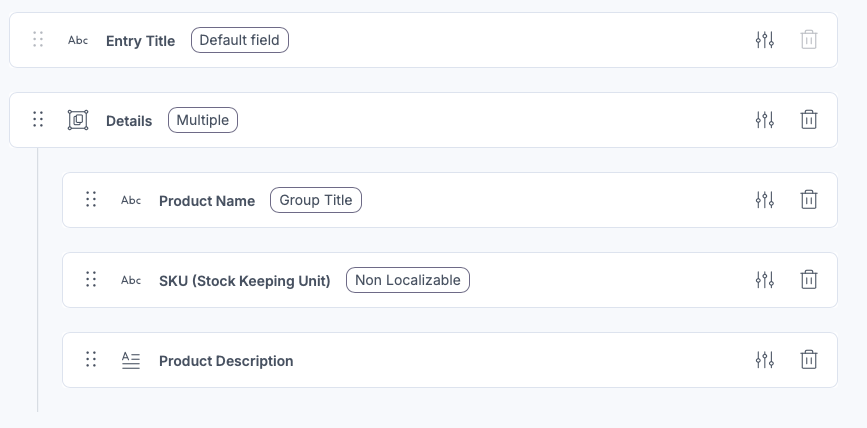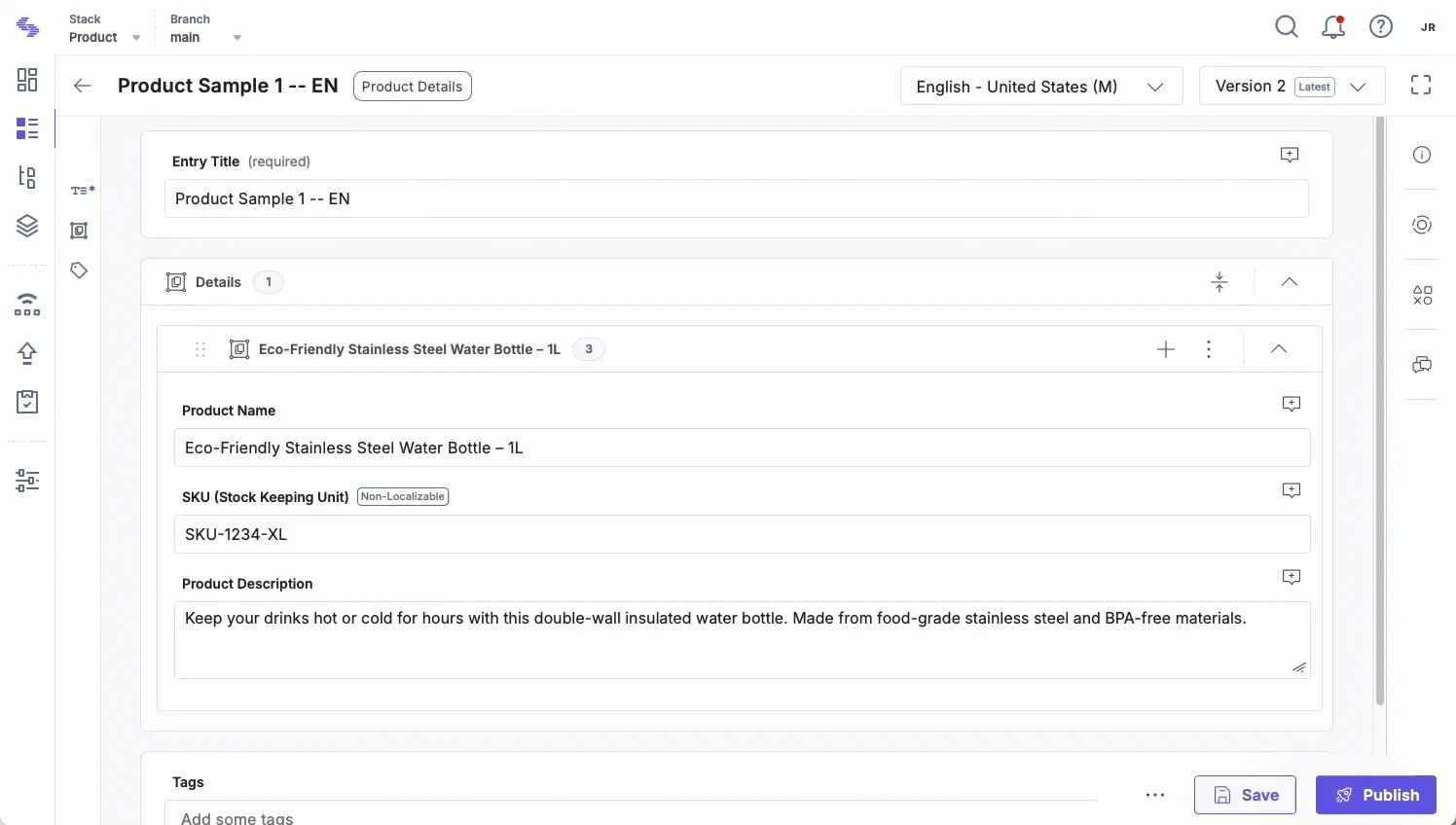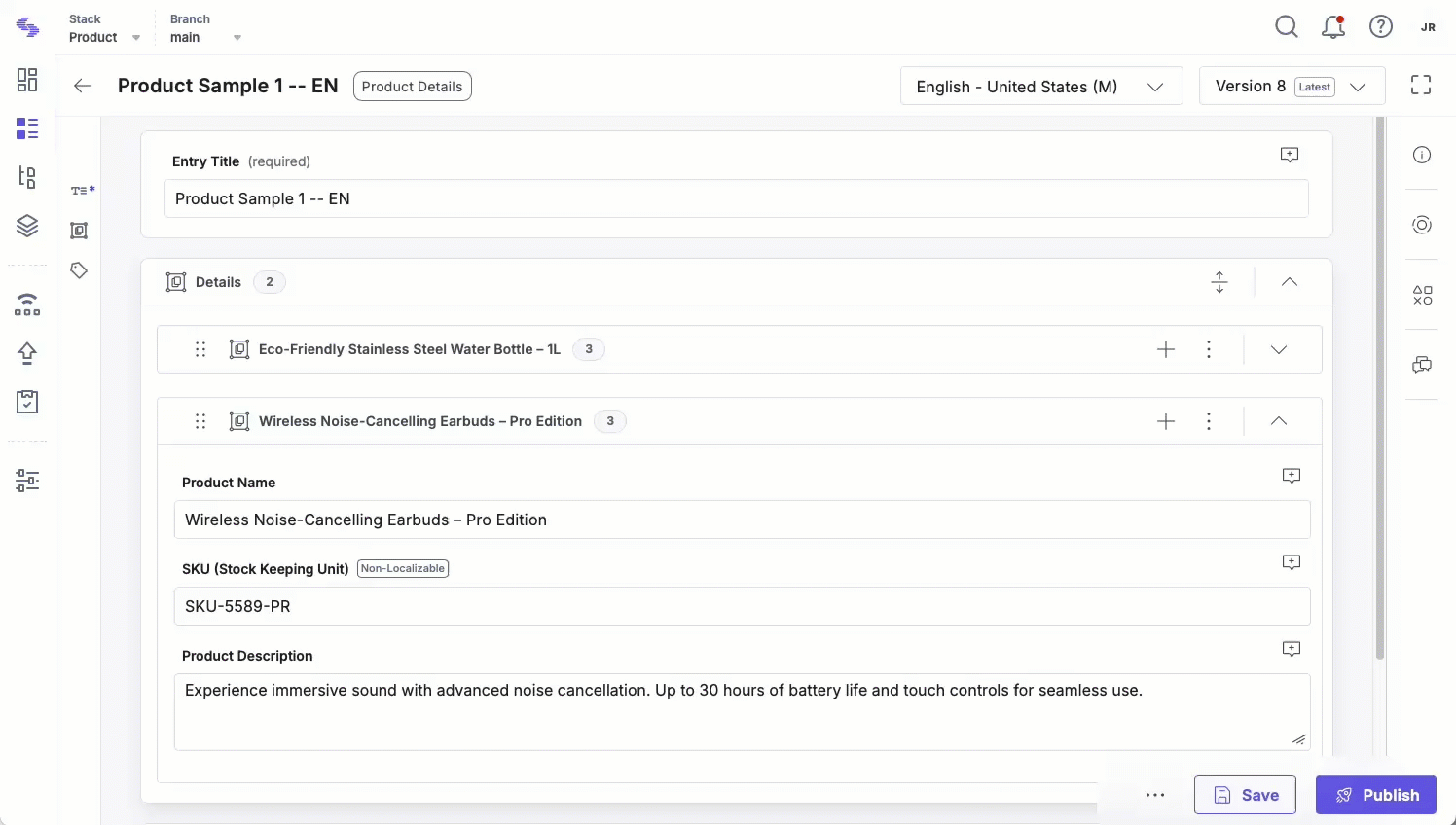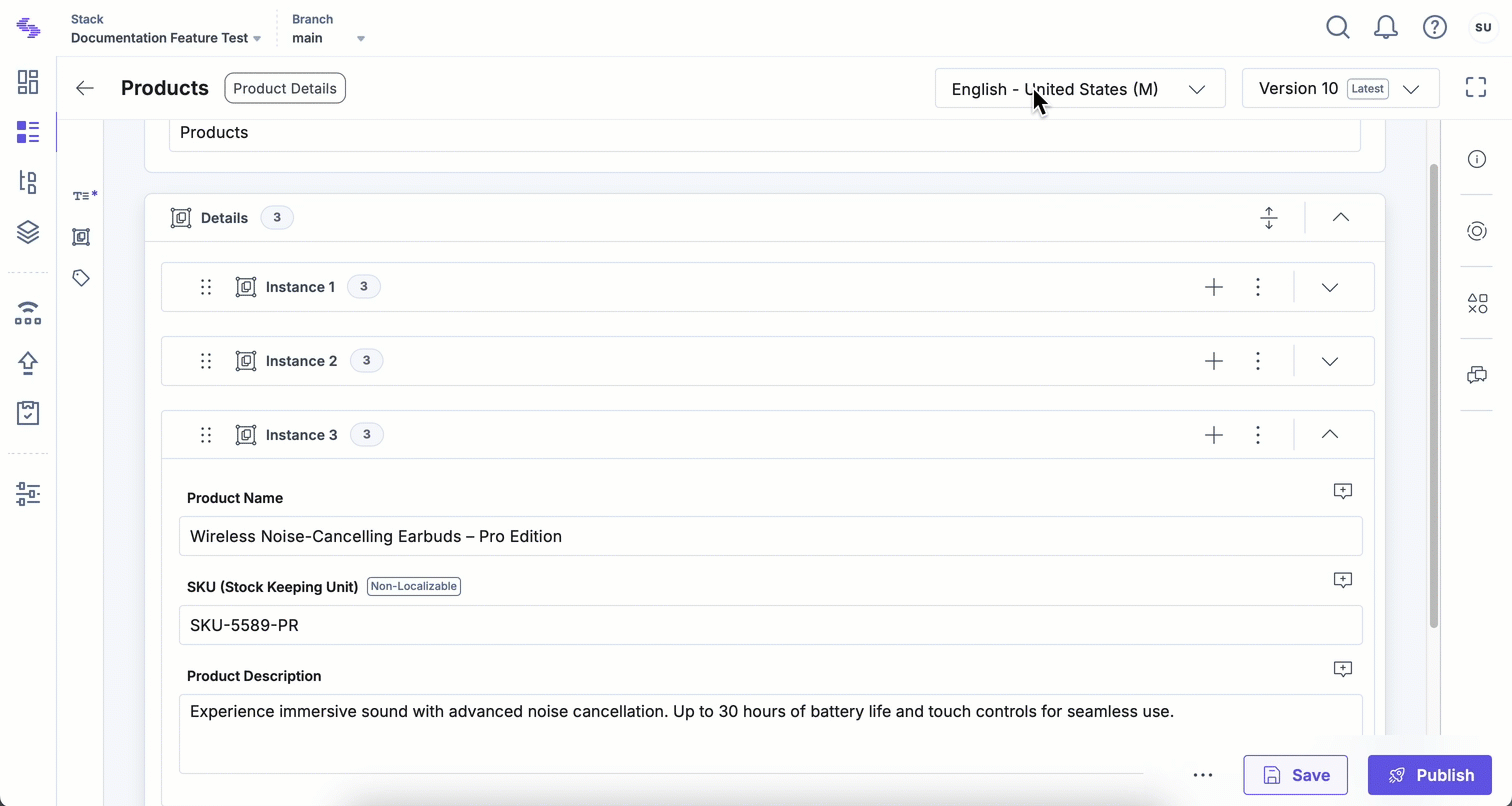Understanding Non-localizable Exceptions for Content Managers
Note: This feature is plan based and may not be available to all users. For more information, you can reach out to our support team.
The non-localizable property in Contentstack ensures that specific fields within a content type maintain consistency across all localized entries. You can also mark individual fields inside Group (Multiple), Modular Blocks, and Global fields as non-localizable.
There are, however, some scenarios under which the non-localizable field may work differently.
This guide explains how non-localizable fields behave in different scenarios and what exceptions to expect when managing localized content.
If your stack was recently upgraded to support Non-localizable fields in Groups (Multiple), Modular Blocks, or Global fields, note that this setting only affects new content going forward.
For example, if you had existing entries with localized content before enabling this feature, and then you mark a field (like Single Line Textbox) as Non-localizable—and that field is inside a Modular Block, Group, or Global field marked as Multiple—the system does not change the field’s behavior in those older entries. The localized versions will still allow editing of that field. This is considered a Non-localizable exception.
However, any new instances you add in the master locale entry after enabling the Non-localizable setting will behave as expected i.e., the field will be read-only in all localized versions.
Imagine you are managing a "Product Details" content type that includes a Group (Multiple) for product specifications. Inside this group, you have the following fields:
- A single-line textbox for the product name.
- A non-localizable single-line textbox for SKU (Stock Keeping Unit).
- A multi-line textbox for Product Description.

The SKU field is crucial for product tracking and must remain consistent across all languages, so it is marked as Non Localizable.
Additional Resource: Learn more about Managing Non-localizable Fields.
Now, let’s explore how this setup behaves in different scenarios.
Updating a Non-localizable Field
When you mark a field as non-localizable within a Group (Multiple), Modular Blocks, or Global field, its data always comes from the master locale.
Note: When localizing an entry via API, if a Group (Multiple), Modular Block, or Global field contains a non-localizable field, you must include the field’s _metadata.uid in the request payload to map that instance in child locale. Refer to the Localize an Entry API reference for more information.
- Any updates made in the master locale automatically reflect in all localized versions.
- These fields remain uneditable in localized entries, ensuring uniformity across languages.
Example: You update the SKU in the master locale (English) from SKU-1234-XL to SKU-8765-XL. This update instantly reflects in all localized versions (French, Spanish, German, etc.), preventing any SKU inconsistencies across regions.

Adding a New Instance in the Master Locale
When you add a new product instance in the master locale, it automatically appears in localized entries only if it contains a non-localizable field.
- Non-localizable fields (like SKU) inherit data from the master locale.
- Other fields (like Product Name and Description) remain editable in localized versions.
Example: A new product variant is added in the master locale (e.g., English). This instance automatically appears in all localized versions (e.g., French) with the SKU field prefilled, inheriting its value from the master locale. The Product Name and Description fields remain empty in the localized entries, allowing regional teams to add translations or localized content as needed.

Adding a New Instance in a Localized Entry
When you add a new instance in a localized entry, it does not inherit any data from the master locale. It remains local to that language.
- The instance exists only in the localized version.
- Non-localizable fields become editable, as they do not have a corresponding value in the master locale. In such a scenario, a tag “Non-localizable (Exception)” appears next to the field name.
Example: You add a region-specific product variant directly in the French locale. Since this instance does not exist in the master locale, the SKU field is editable in this localized version—an exception to the usual non-localizable behavior.

Deleting an Instance from the Master Locale
When you delete an instance from the master locale, the localized versions retain the instance, but the non-localizable fields become editable.
This prevents data loss while giving regional teams flexibility in handling content.
Example: The Wireless Earbuds Pro product is discontinued and deleted from the master locale. The instance remains in localized versions. The SKU field, previously non-localizable, becomes editable in these localized entries and retains the last known value from the master locale before deletion. This allows regional teams to repurpose or customize the entry as needed without losing critical product data.

Restoring a Deleted Master Locale Entry
When you restore a deleted entry in the master locale, any non-localizable fields in localized versions update automatically with the restored data.
Example: The Wireless Earbuds Pro master locale entry is mistakenly deleted and later restored. The SKU field, which was previously removed, is reinstated across all localized versions, ensuring consistency. However, localized content in editable fields remains unchanged.

By leveraging the non-localizable property effectively, you can enhance content governance, improve localization accuracy, and maintain a seamless content experience for global audiences.





.svg?format=pjpg&auto=webp)
.svg?format=pjpg&auto=webp)
.png?format=pjpg&auto=webp)






.png?format=pjpg&auto=webp)